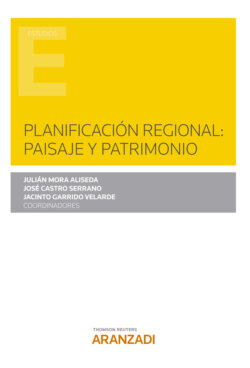Читать книгу Planificación regional: paisaje y patrimonio - José Castro Serrano - Страница 13
На сайте Литреса книга снята с продажи.
2.4. Implementation of Kyoto II - climate and energy package continues the threefold policy approach
ОглавлениеIn March 2007, EU Heads of State agreed on a set of three targets referred to as ’20-20-20 by 2020’ including a target on GHG emissions, renewable energies and energy efficiency. To implement the new targets, the European Commission introduced the ‘Climate and Energy Package’ (link is external) in 2008. This package consists of four main parts:
• a reviewed Directive on emissions trading (ETS Directive) with a single EU-wide cap for the 3rd allocation period (2013-20),
• the Effort-Sharing Decision (ESD) introducing national reduction targets for non-ETS sectors of all MS,
• the Renewable Energy Directive (RED) laying down national targets for use in electricity, heating/cooling and transport and
• a Directive on carbon capture and storage (CCS Directive). In addition, the Fuel Quality Directive and CO2 emission performance standards for cars were adopted together with the Climate and Energy Package (European Commission 2019).
Table 2. European climate change policies and packages.
Source: Ecologic Institute, (www.ecologic.eu).
Energy efficiency was not directly included in the package through specific measures, but is tackled by a great number of sector-specific approaches, including taxation measures, standards, and information tools. Since 2012 the Energy Efficiency Directive (EED) is in place as a common framework of measures for the promotion of energy efficiency (see Table 2 for an overview of the policies implemented in this time frame).
Table 2 also shows that policy instruments developed over time. Some measures evolved and built on experience with previous measures which were reshaped or developed further as a result of policy learning. Also, the requirements of certain interest groups actively shaped and influenced the design of climate policies. Regarding GHG, for example, the EU ETS developed from a system with national caps for each MS towards an EU-wide cap and thereby took some MS control over certain economic sectors out of MS’ hands. In the example of renewable energies, the Renewable Electricity Directive (indicating MS targets for renewable electricity) and the Biofuels Directive merged under the Climate and Energy Package into the RED. Furthermore, the RED introduced binding national renewable energy targets as a share of final energy consumption, and thus increased the legal status of the instruments and included renewable heating and cooling. However, the target framework for 2030 demonstrates that policy development does not necessarily always work towards more stringent solutions. As the 2030 renewable energy target will be introduced as binding only at the EU-level, the stringency of the RED will have to be adjusted to allow Member States to choose their own indicative targets (European Commission 2019).
